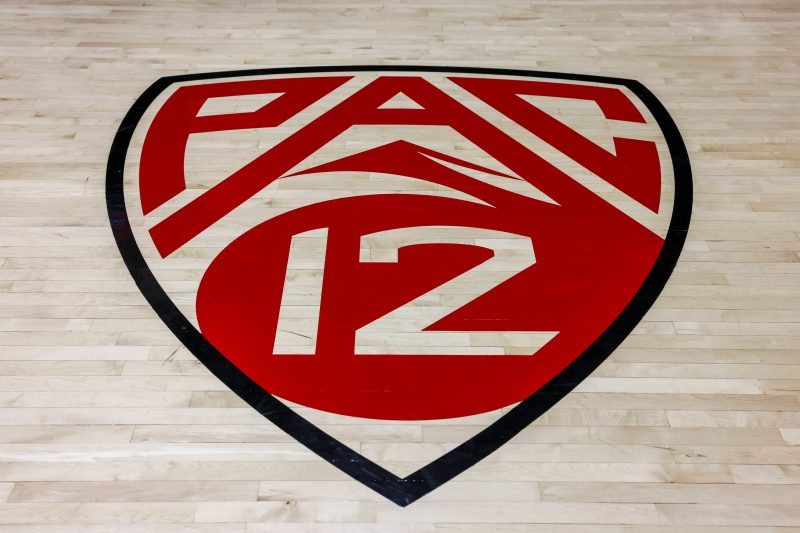LAS VEGAS – In a conference room next to the pool area of the Bellagio hotel and casino, the beleaguered Pac-12 Conference sent a message to the small crowd of reporters and supporters who showed up to listen:
The Pac-12 is not dead.
It still has two schools remaining − Oregon State and Washington State.
So “welcome to the fight.”
That was the theme here at the Pac-12’s preseason football media day event Wednesday − the league’s first since all 10 of the other league members left to pursue more money, more television exposure and more stability in the Big Ten, Big 12 and Atlantic Coast Conferences.
“We got left for nothing,“ Oregon State defensive back Jaden Robinson said Wednesday.
And now it’s time to fight for their future as the two orphans of the “Conference of Champions.” But what happened to them still stings after being left stranded and uninvited by the latest round of college football realignment.
“We’ve got a bar in the back,” Pac-12 commissioner Teresa Gould told the crowd. “Yes, we are drinking tonight during this event. And I would venture to say that if anybody has earned the right to drink, it is the Pac-12, OK?
The crowd laughed in response. Then came some tough questions, like what comes next.
So the Pac-12 is still alive?
Yes, a big reason the league put on this event in Vegas was to make this clear and blast out that theme: “Welcome to the fight.” About 100 people showed up, including maybe a few dozen reporters.
Yogi Roth, a former television analyst for the now-defunct Pac-12 Networks, hosted the event and interviewed players and alumni from the two schools, including former Oregon State running back Steven Jackson and two former Washington State quarterbacks − Jack Thompson and Ryan Leaf.
Thompson recounted how he was “pissed” by what happened. Leaf predicted at least some of the departing schools would come back someday after the next wave of realignment.
“It may be one of the most opportunistic things that could have come about in all of this is you kept the Pac-12 brand,” Leaf told supporters of the two schools. “But guess what? They’re gonna come scrambling back … when the new College Football Playoff changes in two years or whatever it’s gonna look like, OK? And you guys are going to be the foundation of that.”
The scene still made for quite a contrast. On the other side of the freeway in the same city, the Big 12 had rented Allegiant Stadium, home of the Las Vegas Raiders, to use for its own two-day media event this week – a showcase for more than 500 media members to preview the coming football season with all 16 Big 12 teams, including four that decided last year to leave the Pac-12.
Hoping to piggyback off that attention, the two-team Pac-12 rented this room in the Big 12’s media hotel (the Bellagio) and sent out invites to reporters.
How does the two-team league function?
In football, the two teams have a scheduling agreement with the Mountain West Conference to fill out a big part of their schedules. But the clock is ticking under Gould, who has a two-year contract for a reason.
Under NCAA rules, the Beavers and Cougars can continue as a two-team league for up to two years before deciding what to do next, such as possibly combining with the Mountain West Conference under the Pac-12 name.
That’s because leagues in the Football Bowl Subdivision are required to have at least eight members. If they fall short of that, they are allowed a two-year grace period and will continue to use and own the Pac-12 name and logo.
Gould is often asked about the future beyond that but said there are no foregone conclusions. She notes there are multiple and unpredictable possibilities as college sports rides out the turbulence of realignment aftershocks and court cases that are paving the way for paying college players for the first time.
“Most of our time right now is spent evaluating the national landscape, keeping our ear to the ground about what’s going on with all the movement and all the changes that are happening in our industry and then being really thoughtful and really prepared,” she said.
In the meantime, there’s hope
Oregon State and Washington State historically have been known as scrappy underdogs with fervent fan followings in sports. Now comes perhaps their biggest fight yet.
It helps that the league has a “war chest” of about $265 million to fund operations and invest, which includes “normal” Pac-12 revenues from the Rose Bowl, College Football Playoff and NCAA men’s basketball tournament.
“We’re not licking our wounds,” Washington State head coach Jake Dickert said. “We’re licking our chops, because now is opportunity.”
Leaf, the former Cougars quarterback, appeared to get a little emotional about it Wednesday.
“I don’t think anybody else knows a better way to get back up than Cougs and Beavs, just because we get kicked down so much,’ Leaf said. “And this is a perfect example of that.”
Both football teams open with separate home games on Aug. 31. Each will be televised by The CW Network, the Pac-12’s new television partner.
Follow reporter Brent Schrotenboer @Schrotenboer. Email: bschrotenb@usatoday.com

